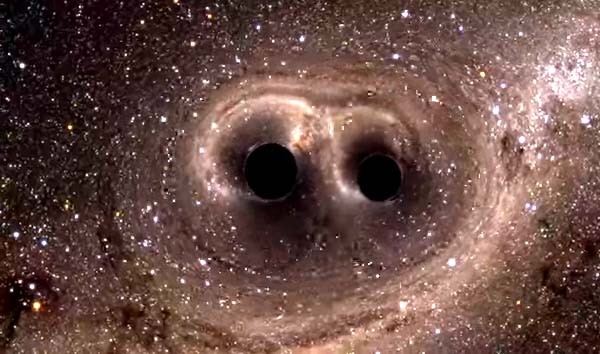A new astronomical survey confirms that there are even more black holes hiding in our galaxy and across the universe, than initially expected as future gravitational wave detectors will now be teeming with signals, rippling across spacetime due to black hole collisions.
An international team of scientists created a new model of how all the matter in the universe exists as researchers believe it is the most complex model to be ever consolidated. This new model also provided crucial predictions of black hole collisions that generated these gravitational waves that were detected by LIGO (Laser Interferometer Gravitational-wave Observatory).
These binary black holes that were detected from the gravitational waves from LIGO detections are not just any kind of black hole, but they are supermassive black holes that were created from ancient stars that burn stellar fuel from a more pure type of hydrogen. As these stars die and collapse from supernovae to neutron stars, they then transform into new black holes. These black holes often times consist of about 40 to 60 times more solar mass that our sun.
These supermassive binary black holes are not yet detected in the Milky Way galaxy, but they do exist in the deepest regions of the universe. According to Richard O'Shaughnessy from the Rochester Institute of Technology, there are apparently regions in distant star systems that serve as nurseries for spawning these types of black hole pairs.
This new model and study has provided crucial insight about the very nature of these supermassive black holes, as simulations are suggesting that their spin rates coincide with their orbits on a single plane. These powerful collisions will not affect their orbital positions but they can still produce a significant amount of force that can change the axial shifts of smaller black holes.
Apart from this, researchers also reveal that this new model is now being utilized by other gravitational wave studies in order to help astronomers to predict and analyze the nature of these black hole collisions, as the model suggests that there are several collisions.
O'Shaughnessy adds, LIGO will not be detecting thousands of these black holes every year but many of them will yield unprecedented data and more exciting findings since there will be better instruments to view them along with better techniques in studying them.
This new study is published in the journal Nature.



























